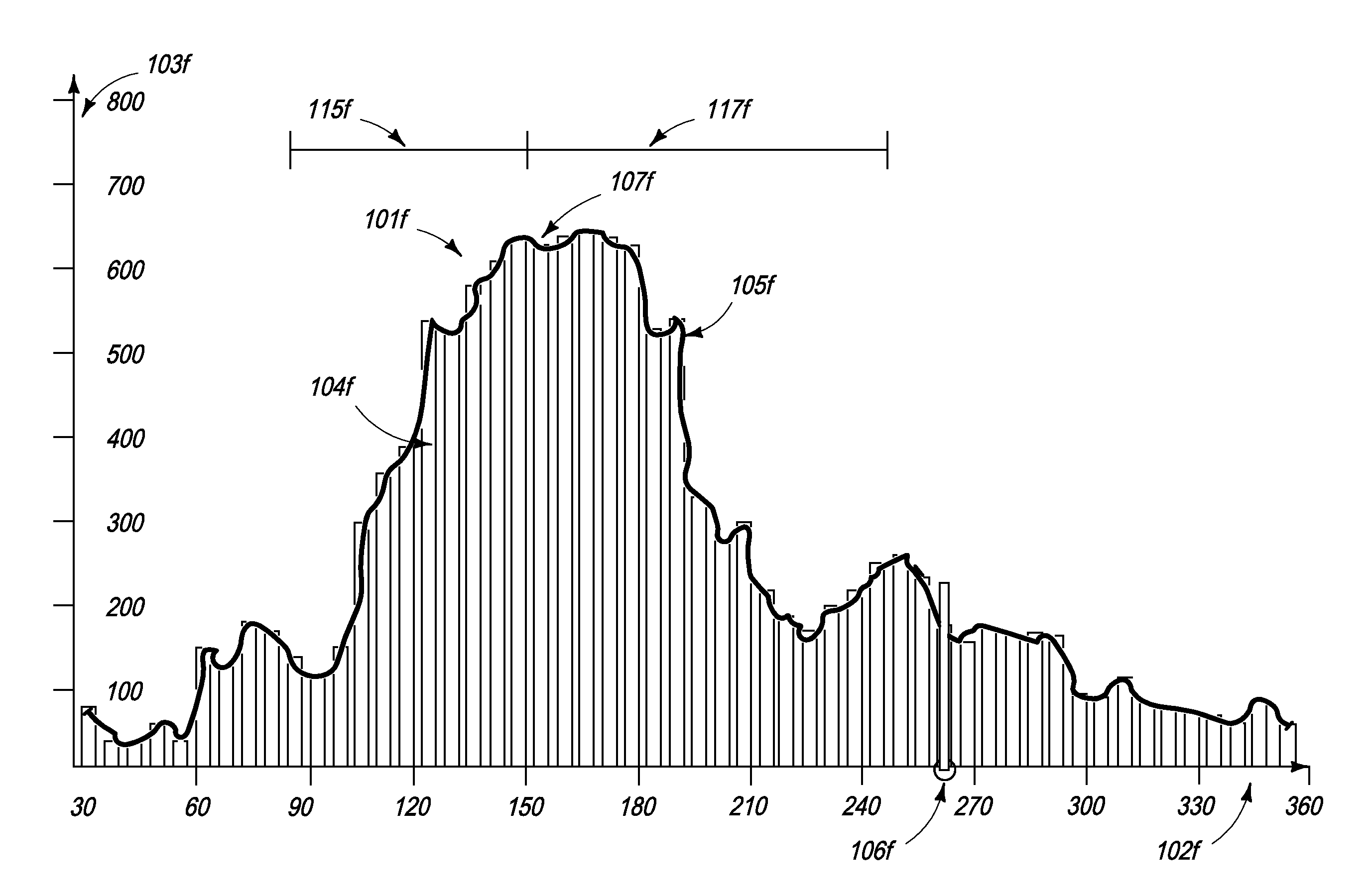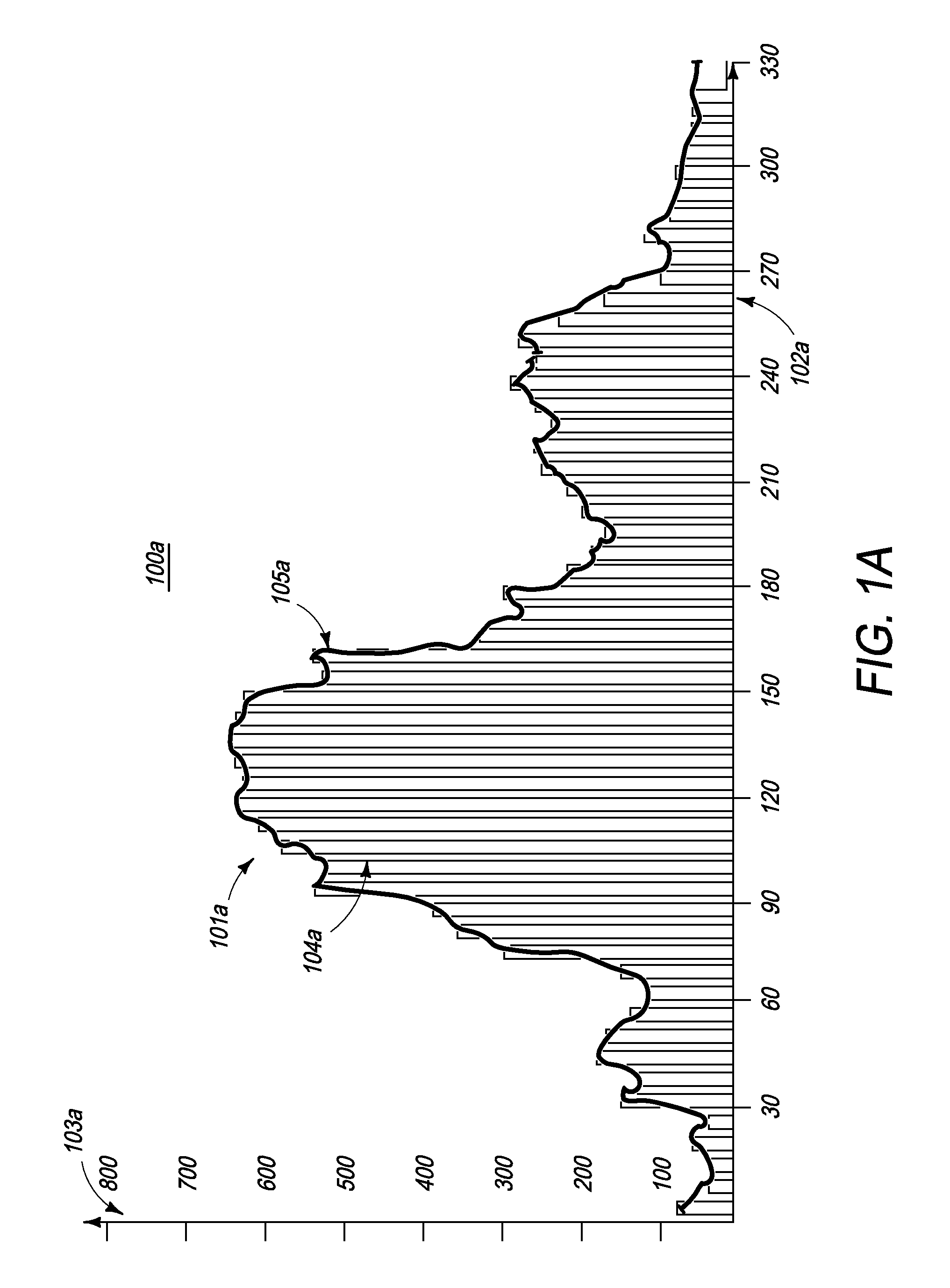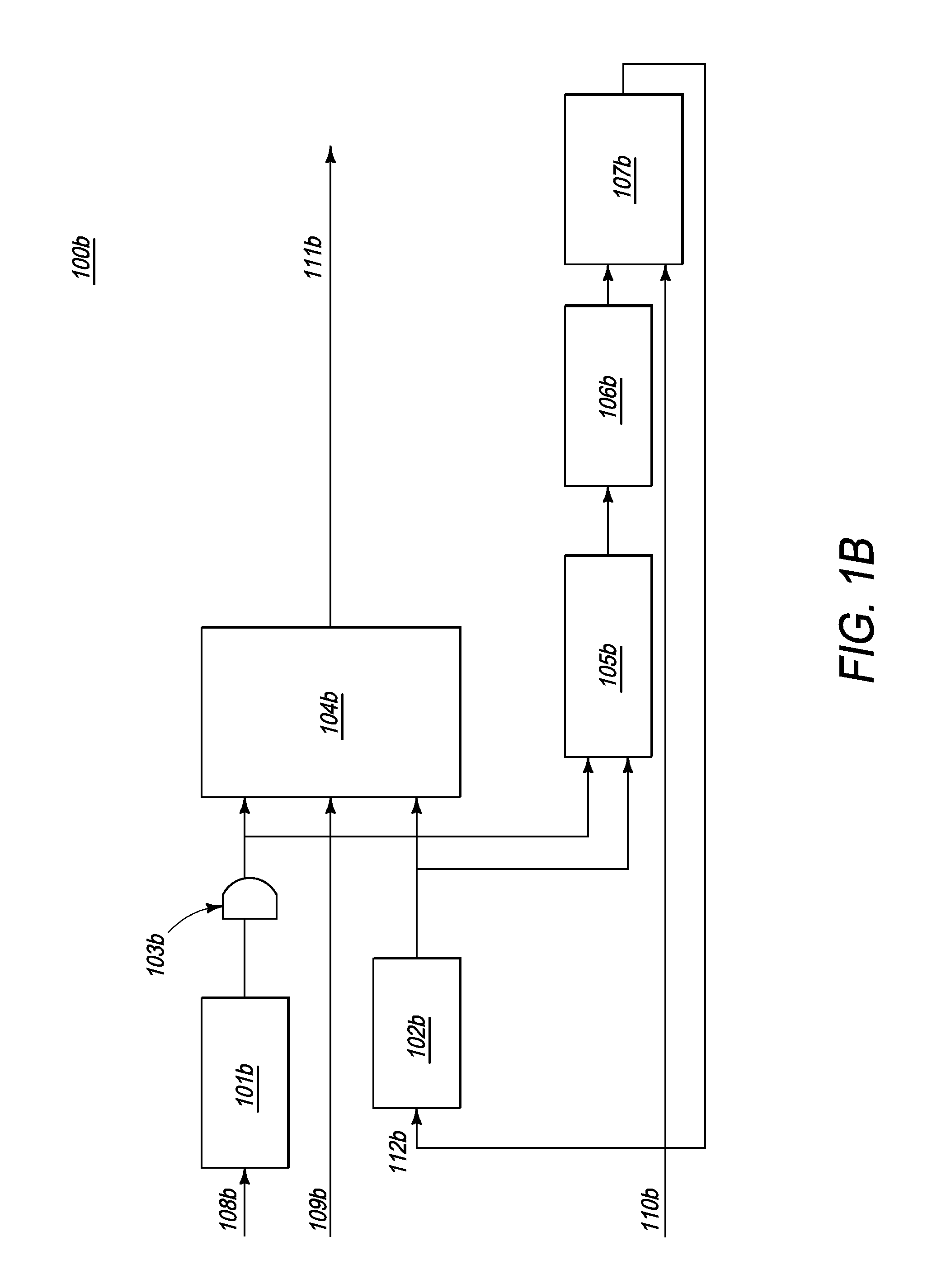Methods and systems for managing variable delays in packet transmission
a packet transmission and variable delay technology, applied in the field of methods and systems for managing variable delay in packet transmission, can solve problems such as mechanical or electrical changes, packet arrival times vary, and poor playout quality
- Summary
- Abstract
- Description
- Claims
- Application Information
AI Technical Summary
Benefits of technology
Problems solved by technology
Method used
Image
Examples
first embodiment
[0101]Referring to FIG. 2a, the top-level hardware system architecture is shown. A data bus 205a is connected to interfaces 210a existent on a first novel Media Engine Type I 215a and on a second novel Media Engine Type I 220a. The first novel Media Engine Type I 215a and second novel Media Engine Type I 220a are connected through a second set of communication buses 225a to a novel Packet Engine 230a which, in turn, is connected through interfaces 235a to outputs 240a, 245a. Preferably, each of the Media Engines Type I 215a, 220a is in communication with a SRAM 246a and SDRAM 247a.
[0102]It is preferred that the data bus 205a be a time-division multiplex (TDM) bus. A TDM bus is a pathway for the transmission of a number of separate voice, fax, modem, video, and / or other data signals simultaneously over a single communication medium. The separate signals are transmitted by interleaving a portion of each signal with each other, thereby enabling one communications channel to handle mul...
second embodiment
[0175]The tone signaling component 1919, including recognition of DTMF / MF, call progress, call waiting, and caller identification, operates to intercept tones meant to signal a particular activity or event, such as the conducting of two-stage dialing (in the case of DTMF tones), the retrieval of voice-mail, and the reception of an incoming call (in the case of call waiting), and communicate the nature of that activity or event in an intelligent manner to a receiving device, thereby avoiding the encoding of that tone signal as another element in a voice stream. In one embodiment, the tone-signaling component 1919 is capable of recognizing a plurality of tones and, therefore, when one tone is received, send a plurality of RTP packets that identify the tone, together with other indicators, such as length of the tone. By carrying the occurrence of an identified tone, the RTP packets convey the event associated with the tone to a receiving unit. In a second embodiment, the tone-signaling...
PUM
 Login to View More
Login to View More Abstract
Description
Claims
Application Information
 Login to View More
Login to View More - R&D
- Intellectual Property
- Life Sciences
- Materials
- Tech Scout
- Unparalleled Data Quality
- Higher Quality Content
- 60% Fewer Hallucinations
Browse by: Latest US Patents, China's latest patents, Technical Efficacy Thesaurus, Application Domain, Technology Topic, Popular Technical Reports.
© 2025 PatSnap. All rights reserved.Legal|Privacy policy|Modern Slavery Act Transparency Statement|Sitemap|About US| Contact US: help@patsnap.com



